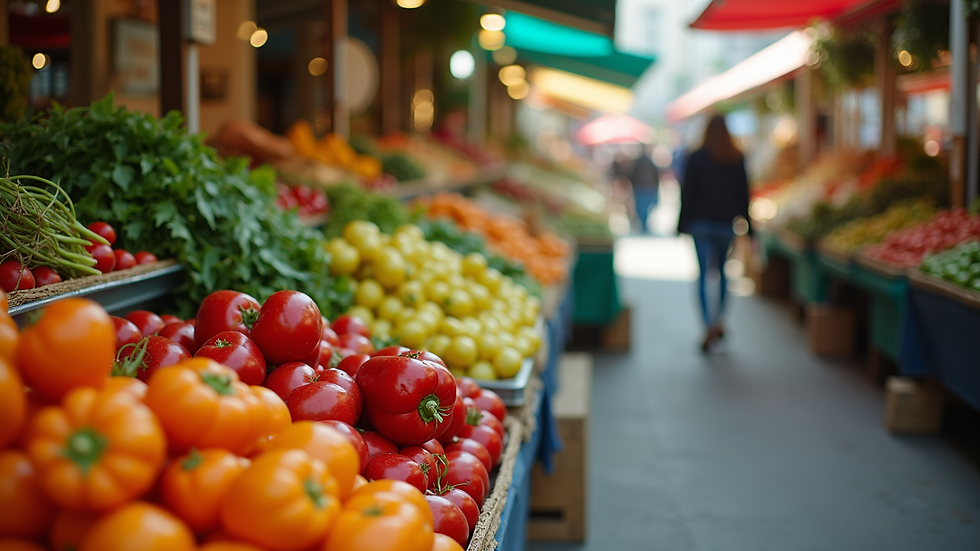MASTERING THE ART OF RESTAURANT GUIDES
- Paul Forciniti
- Oct 9
- 4 min read
Updated: Oct 27
Navigating the culinary world can be as complex as creating a Michelin-star-worthy dish. Yet, the power of a well-crafted restaurant guide is undeniable. It serves as a beacon for diners and a strategic tool for hospitality businesses aiming to elevate their brand and guest experience. Over my two decades of consulting with restaurants, hotels, and hospitality groups, I’ve seen firsthand how a thoughtfully designed guide can transform not only customer engagement but also operational success. So, how do you master this art? Let’s dive in.
CRAFTING RESTAURANT GUIDES: THE BLUEPRINT FOR SUCCESS
Creating a restaurant guide is not just about listing eateries. It’s about storytelling, curation, and strategic alignment with your brand’s values. When I work with clients, I emphasize the importance of clarity and authenticity. Your guide should reflect the unique culinary identity of your brand while providing practical, actionable information for your audience.
Start by defining your guide’s purpose. Is it to showcase local gems, highlight your own venues, or educate guests on culinary trends? Once you have a clear goal, structure your content accordingly. Use categories like cuisine type, price range, ambiance, and dietary options to help readers navigate easily.
Pro tip: Incorporate vivid descriptions and sensory details. Instead of saying “great seafood,” try “freshly caught Atlantic salmon grilled to perfection, served with a zesty lemon butter sauce.” This paints a picture and whets the appetite.
Don’t forget the power of visuals. High-quality images can make or break your guide’s appeal. Placeholders for images should be strategically positioned to complement the text and provide visual breaks.

WHAT IS MICHELIN GUIDE VS STAR?
Understanding the Michelin Guide and its star system is crucial for anyone involved in the hospitality industry. The Michelin Guide is more than just a list; it’s a global benchmark for culinary excellence. But what exactly differentiates the guide from the stars it awards?
The Michelin Guide is an annual publication that reviews and rates restaurants worldwide. Inspectors visit anonymously, evaluating based on five key criteria: quality of ingredients, mastery of flavor and cooking techniques, the personality of the chef in the cuisine, value for money, and consistency.
Stars are the accolades awarded within the guide:
One Star: A very good restaurant in its category.
Two Stars: Excellent cooking, worth a detour.
Three Stars: Exceptional cuisine, worth a special journey.
Achieving even one star can elevate a restaurant’s profile dramatically. However, the guide itself offers more than stars; it includes Bib Gourmand awards for good quality and good value, and other distinctions that help diners make informed choices.
For hospitality businesses, understanding this system helps in setting realistic goals and aligning culinary standards with global benchmarks.

THE ROLE OF AUTHENTICITY AND LOCAL ADAPTABILITY
In my consulting practice, I stress that authenticity is the cornerstone of any successful culinary experience. Guests crave genuine flavors and stories that resonate with the locale. A restaurant guide that captures this authenticity will naturally engage and inspire.
Local adaptability means tailoring your guide to reflect the unique tastes, ingredients, and cultural nuances of your region. For example, a guide for a coastal city should highlight seafood specialties and waterfront dining experiences. Conversely, an urban center might focus on innovative fusion cuisine and trendy eateries.
This approach not only enriches the guide’s content but also supports local producers and businesses, creating a sustainable ecosystem.
Actionable tip: Collaborate with local chefs, farmers, and artisans to gather insider knowledge and exclusive content. This adds depth and credibility to your guide.

LEVERAGING A RESTAURANT GUIDE FOR BUSINESS GROWTH
A well-executed restaurant guide is a powerful marketing tool. It can drive traffic, boost brand awareness, and foster customer loyalty. Here’s how to leverage it effectively:
Integrate with Digital Platforms: Make your guide accessible online, optimized for mobile devices. Interactive maps, filters, and user reviews enhance usability.
Cross-Promote: Use your guide in email campaigns, social media, and in-house promotions. Encourage guests to share their experiences using branded hashtags.
Update Regularly: Keep content fresh with seasonal menus, new openings, and special events. This keeps your audience engaged and returning for more.
Measure Impact: Track metrics like website visits, guide downloads, and reservation increases to assess ROI and refine your strategy.
Remember, a restaurant guide is not a static document but a living resource that evolves with your brand and market trends.
ELEVATING CULINARY STORYTELLING THROUGH STRATEGIC CONSULTING
At Paul Forciniti Consulting, we believe that culinary storytelling is an art and a science. It’s about weaving your brand’s narrative into every dish, every interaction, and every touchpoint. A restaurant guide is an extension of this storytelling.
By combining creative vision with strategic insights, we help hospitality businesses craft guides that are not only informative but also inspiring. Our global culinary perspective ensures authenticity, while our local adaptability guarantees relevance.
Whether you’re developing a new menu, planning a corporate event, or launching a multi-venue guide, the goal is consistent, profitable guest experiences that reflect your brand’s essence.
If you want to explore how a tailored restaurant guide can transform your business, let’s connect. Together, we’ll create something memorable.
Mastering the art of crafting restaurant guides is a journey. It requires passion, precision, and a deep understanding of both culinary excellence and guest expectations. But with the right approach, your guide can become a trusted companion for diners and a strategic asset for your business. Ready to start?

Comments